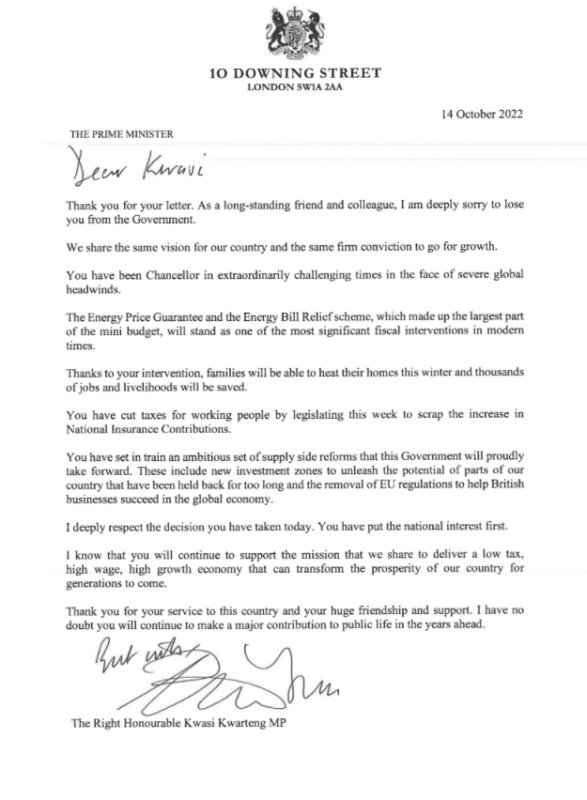Yesterday afternoon I had a race against the clock to deliver an analysis of Liz Truss’s signature (in her letter of resignation to Kwasi Kwarteng) for Metro UK (speaking on behalf of Findmypast).
What struck me as most interesting, was just how much her trademark signature had changed since June 2020, when she could only dream of being PM.
In 2020, Truss’s signature was filled with tension, like a tightly coiled spring, ready to burst into action and get down to business. However, at the time of writing it was clear Truss felt she had much to accomplish but her hands were tied and she hadn’t the opportunity to say or do any of the things she wanted (to say and do), and that had left her feeling frustrated and deeply dissatisfied at an aspirational level.
We can see how tough Truss was/ is (see the straight downstroke of the s and the angular shapes throughout) and how she has lots to say (gaping a and deep garland connections) and insists on having her own way. She’s all for radical thinking, but her (tall stems) are fluctuating wildly in size, which is a clear indicator that she’ll be indecisive and do a lot of U-turns along the way.
In 2022, we have a much less muted rendition. Everything is a big drama. Her surname remains vertical (and the letter size diminishes), so she’s trying to convey an air of cool, poised, unflappable impartiality and diplomacy. However, her Christian name is strongly inclined – falling forwards – revealing a knee-jerk tendency to act impulsively. So Truss acts first and thinks after, grappling to keep it all together.
The strong left swinging endstrokes on ‘wishes’ and her Christian name are self-protective. They tell of a woman who has feelings of regret, guilt and self-recrimination. Truss can be tenacious and bullishly optimistic, but there’s vanity and fear that she will elicit criticism.
You can see both signatures below, and to read the whole article online click here > Metro News

